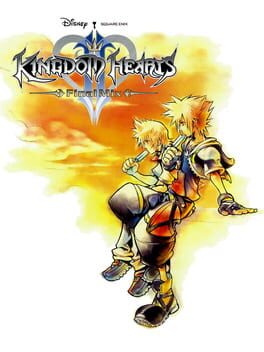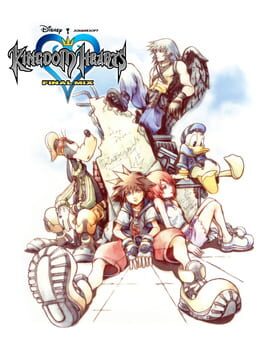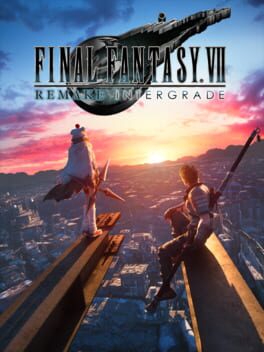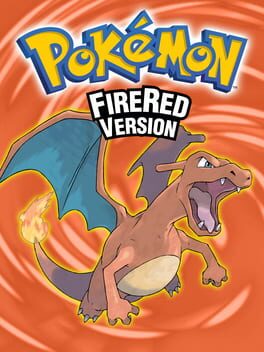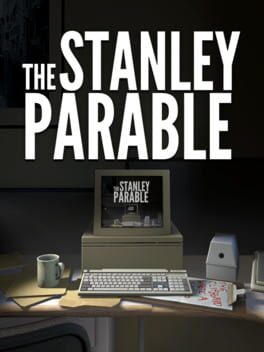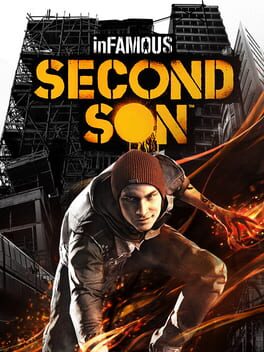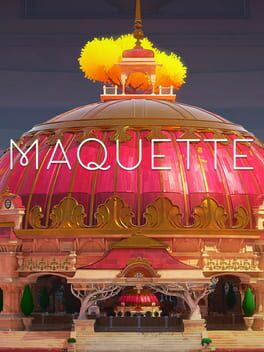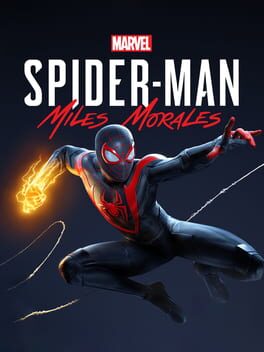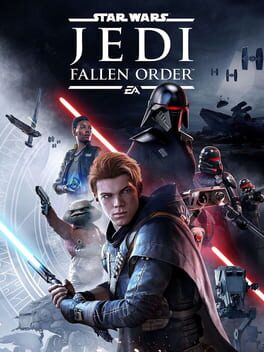GxBemis
This review contains spoilers
Beyond evolving combat from the original into a more cohesive form the game fittingly also begins to mature its principal characters. It's a story about adolescence, specifically accepting your identity. This is why the game is so secretive with rather important characters (e.g. Roxas, Riku, DiZ, Xehanort, Namine), many of whom are introduced in the opening hours and disappear until the end, they hide themselves from the player (typically out of shame from the past, or who they are/have become). Sora is one of the few that chooses not to obfuscate his identity, allowing him to grow and exist beyond the veritable twilight. With this understanding, many of the game's key moments begin to click.
The prologue segment is a brief retreat into the relatable but artificial life of Roxas before returning to his alter ego. Nobodies are said to be illegitimate reflections of one's identity, yet display disconcerting similarities to people both physically and behaviorally, inviting players to question the diagnosis. In the end the Organization chases a constructed vision of self-actualization (Kingdom Hearts, an artificial variant at that) and ironically lose what little selfhood they clinged to, minus Roxas, the only one to confront and accept himself and retaining his personhood along with Namine, ironic considering their existence was just a byproduct of an unrelated event. Some of its ideas are unkept but you realize twists like the truth behind Ansem and DiZ work in service of that flagship theme.
Now, the game's structure feels very delineated, the original plot occurring in original worlds and the Disney mostly keeping to itself. This lends itself to some dull irrelevant moments in the middle of acts, particularly with the first round of Disney world visits and their janky start-and-stop momentum between slow frequent cutscenes and blisteringly fast action combat, in addition to their misguided venture to mimic the films on ill-equipped hardware (even if they could, it would be pointless). Worlds all also feel wider and hallowed out, suited for its emphasis on more complex and crowded action but I can't help feeling like this near ubiquitous level design and lack of substantial interaction eliminates some of the charm and immersion of actually playing within a Disney movie. Second visits at least sport sleeker campaigns but have worse bosses and are structured in a repetitive way. My qualms with Disney worlds are numerous but in the end the gameplay inside them is varied and fun, and there are some real highlights, like Disney Castle, Auron in Olympus, and the implementation of Space Paranoids.
Still the zenith of the series for me, and one of my favorites.
The prologue segment is a brief retreat into the relatable but artificial life of Roxas before returning to his alter ego. Nobodies are said to be illegitimate reflections of one's identity, yet display disconcerting similarities to people both physically and behaviorally, inviting players to question the diagnosis. In the end the Organization chases a constructed vision of self-actualization (Kingdom Hearts, an artificial variant at that) and ironically lose what little selfhood they clinged to, minus Roxas, the only one to confront and accept himself and retaining his personhood along with Namine, ironic considering their existence was just a byproduct of an unrelated event. Some of its ideas are unkept but you realize twists like the truth behind Ansem and DiZ work in service of that flagship theme.
Now, the game's structure feels very delineated, the original plot occurring in original worlds and the Disney mostly keeping to itself. This lends itself to some dull irrelevant moments in the middle of acts, particularly with the first round of Disney world visits and their janky start-and-stop momentum between slow frequent cutscenes and blisteringly fast action combat, in addition to their misguided venture to mimic the films on ill-equipped hardware (even if they could, it would be pointless). Worlds all also feel wider and hallowed out, suited for its emphasis on more complex and crowded action but I can't help feeling like this near ubiquitous level design and lack of substantial interaction eliminates some of the charm and immersion of actually playing within a Disney movie. Second visits at least sport sleeker campaigns but have worse bosses and are structured in a repetitive way. My qualms with Disney worlds are numerous but in the end the gameplay inside them is varied and fun, and there are some real highlights, like Disney Castle, Auron in Olympus, and the implementation of Space Paranoids.
Still the zenith of the series for me, and one of my favorites.
First time playing through this version. Both GBA and PS2 share major design choices and story but deviations elsewhere. The charming spritework and 2D translation to the GBA in addition to tighter overall pacing dials down the monotony recycled from the first game compared to the remake, rendering it the more appealing option. Combat might be a bit better in the remake with a greater variety of sleights and more comfortable controls but suffers the same core issues as this one (poor balancing and uneven difficulty curve) which are difficult to forgive with an intricate strategy-oriented combat system. RNG use is mixed; it serves to encourage deck variety across playthroughs, but also occasionally and arbitrarily kneecaps campaign progression, mandating that players grind for an indefinite period before advancing. By the time they encounter a boss, an actual meaningful challenge, the player will be strong enough that building a thoughtful, quality deck is often inessential. Despite these issues, I can appreciate the ambition behind the combat, even if I'm not eager to return to it as presented here.
Always loved the melancholy of the ending; so wistful for the tranquil days behind you, knowing they are just out of reach. So dear in heart, for childhood is a house of sticks and mud, quaint and untenable. Inevitably, you must shed the shell of reminiscence, dust yourself off, and brave the daunting path before you. As the credits roll, we see the fairy-tale endings of all the characters we shared this journey with: reunited lost loves, settling into a newfound peace; for them, another happily ever after. High atop the mountains, or just over the meadow, our very own happy ending awaits us. It's up to you to take the first step.
Combat really shines, given a lot more emphasis than the base game. Yuffie's relatively advanced technicality and speed in conjunction with the synergy moves you can activate with Sonon offer plenty of depth in the absence of multiple playable characters. Maps use squeeze-throughs less often and when they are used its usually more creative than sliding between walls or balancing on boards, incorporating Yuffie's mobility to maintain a quick rhythm. Variety is king here, basically acting as a mini-FF7R experience you can play in a weekend, complete with plentiful and pleasurable mini-games and optional fights. This variety even extends to the score, which is just as excellent as the base game's. Pacing still suffers despite the momentum, largely due to the bloating of a story that, while enjoyable, hardly feels like it contributes much to the main story. However, Episode Intermission does much to excite for the next part and stands as a solidly-priced DLC to play in the interim.
2016
This review contains spoilers
In The Last Guardian, you play as a boy trying to find his way home with a majestic creature named Trico. There is never a moment where the game abandons this concept; through thick and thin, for every puzzle, every lever, every otherworldly encounter, every small instance of flight, for every quiet moment inside this ruined castle, you are a boy with a beast trying to get home. Over time, the player themselves learn to love Trico. Their journey is the boy's, and the boy loves Trico. As the hours pass in such an empty world, you'll always have a companion. Trico is easy to love.
However, the journey is arduous, and circumstances lead to the boy and the beast both returning to the village severely injured. Trico, wishing no harm to the villagers, returns the boy in hopes of them nursing him back to health. Trico mourns for the boy, but the villagers misinterpret this mourning as a threat and attack Trico. The broken creature is forced to retreat, and presumed to have died without aid.
After credits we return to our story after it ended, the boy now an adult. After so many years, he recalls his story and pays tribute to his old friend. It is then we cut back to the ruined castle he escaped from. For the last few seconds of the game, we see two pairs of green eyes in the dark. The end.
So...is Trico alive?
I don't know.
I consider The Last Guardian a tragedy. Like all good tragedies, it warns us about the danger of a particular action or attitude. In truth, despite Trico and the boy's difficult journey home, and despite their bond, they could never remain together. Stubbornness and ignorance drove Trico away, and the player receives the ultimate punishment: the lack of closure.
If Trico was shown to have lived, the player would be satisfied and content. If Trico was shown to have died, it absolutely would be sad for the boy/player, but death can be accepted with time. Mourning eventually makes way for closure. The player receives neither of these endings, leaving the status of Trico a mystery. The boy/player may have formed a bond with Trico, but the world refused this bond, and severed this relationship. Trico has been completely removed from the life of the boy/player, so just as the boy, the player becomes a victim and is left only with uncertainty. Trico might have lived, found a mate, and began to reproduce his species free of the influence of the castle's arcane magic. Or he might have died, and those eyes belong to the only survivors in the species remaining. Maybe there were even more of this type of creature that we have yet to discover. We don't know, and now we never will.
By leaning into the nature of the gaming medium, through encouraging the player to engage with love through their interactions with Trico, and subsequently ripping that love away from you, The Last Guardian forces you not just to understand or empathize, but to feel the tragedy first-hand. This is why I find it so easy to dismiss many of the technical imperfections, because the game provides an entirely unparalleled, deeply personal experience.
However, the journey is arduous, and circumstances lead to the boy and the beast both returning to the village severely injured. Trico, wishing no harm to the villagers, returns the boy in hopes of them nursing him back to health. Trico mourns for the boy, but the villagers misinterpret this mourning as a threat and attack Trico. The broken creature is forced to retreat, and presumed to have died without aid.
After credits we return to our story after it ended, the boy now an adult. After so many years, he recalls his story and pays tribute to his old friend. It is then we cut back to the ruined castle he escaped from. For the last few seconds of the game, we see two pairs of green eyes in the dark. The end.
So...is Trico alive?
I don't know.
I consider The Last Guardian a tragedy. Like all good tragedies, it warns us about the danger of a particular action or attitude. In truth, despite Trico and the boy's difficult journey home, and despite their bond, they could never remain together. Stubbornness and ignorance drove Trico away, and the player receives the ultimate punishment: the lack of closure.
If Trico was shown to have lived, the player would be satisfied and content. If Trico was shown to have died, it absolutely would be sad for the boy/player, but death can be accepted with time. Mourning eventually makes way for closure. The player receives neither of these endings, leaving the status of Trico a mystery. The boy/player may have formed a bond with Trico, but the world refused this bond, and severed this relationship. Trico has been completely removed from the life of the boy/player, so just as the boy, the player becomes a victim and is left only with uncertainty. Trico might have lived, found a mate, and began to reproduce his species free of the influence of the castle's arcane magic. Or he might have died, and those eyes belong to the only survivors in the species remaining. Maybe there were even more of this type of creature that we have yet to discover. We don't know, and now we never will.
By leaning into the nature of the gaming medium, through encouraging the player to engage with love through their interactions with Trico, and subsequently ripping that love away from you, The Last Guardian forces you not just to understand or empathize, but to feel the tragedy first-hand. This is why I find it so easy to dismiss many of the technical imperfections, because the game provides an entirely unparalleled, deeply personal experience.
I played this game a lot as a kid, but I couldn't remember if I actually managed to beat it back then. All these years later, this is still a really solid entry point into the series. The story is simple but effective for the premise, mostly just spurring the player on their journey. It works because having such a simple story allows the journey itself to be personalized not only through which Pokemon you catch but also the order you tackle the campaign in. By spending less time on the story, there are less restrictions and more freedom for the player, which is really crucial here because the core gameplay itself is also really basic and not terribly engaging on its own until endgame. Species variety and slow pacing are particular faults here that are mostly mitigated once the game opens up after the third gym or so.
2016
2013
Definitely a measure of charm in the delivery of its concept and its ambition in approaching themes regarding narrative design in games is admirable, but it runs itself dryer the longer you play. The primary endings are often intriguing but there is very little else to think about or do outside of them, feels often like it poses and commentates on questions that it doesn't really bother attempting to answer. Still fairly entertaining and funny.
2014
Despite Sucker Punch being one of my favorite developers for their work on the Sly series, I haven't been too fond of their Infamous series. The games are inferior not only from a technical perspective but also in terms of narrative and design. While Sly cleverly handpicked and streamlined elements from the then-abundant mascot platformers of the era and combined them with a charming comic book aesthetic via stylized intro cutscenes and in-game cel shading techniques to create something wholly unique to the medium, Infamous rarely surpasses its open-world/sandbox peers despite ostensibly employing a similar approach, albeit with more trendy gritty open-world/sandbox-type fare. Your arsenal and enemies are repetitive, and while the games try to offset this with a variety of missions in the campaign, they rarely deviate enough to offer any real engagement. The occasional bland boss fight fails to excite as well. The morality (karma) system the series champions underscores any real depth characters could possibly have since different choices can't actually matter or have their own lasting consequences. As far as design goes, karma ironically is a thoughtless ordeal, since all the best power upgrades are locked in the furthest rank of either morality, meaning the most optimal play is to commit to either side at the start and never look back. Additional steep downgrades are found in rote plot beats, choppier performance, and more boring visuals.
Really, any modicum of quality that shines through the experience is probably due to the expertise of the developer. As conflicted as the design is, and as forgettable the flavor, Infamous remained fun to actually play. It well-executes the concept of an all-powerful individual that reigns over an open sandbox, free to do whatever the player desires with somewhat appropriate responses in the narrative, however insignificant. Traversal and movement feel fluid, and haven't aged as poorly as nearly everything else. The lack of restriction and prioritization of interactivity make the shallowness engaging on a surface level. Sure, its a mess, but a mess you can experience whatever way you want to. That doesn't make the series good, but there is a worthwhile experience tucked away there.
It's a shame, then, that the series' PS4 debut places the worst parts of the first two games front-and-center, struggling to hold the player back while attempting to contextualize their actions in meaningless ways. The narrative becomes harder to dismiss, which make its failings of characterization more apparent. Karma makes a comeback with an even greater dilemma; trudge through the good path for some semblance of cohesion in the campaign in exchange for your patience, or commit to the bad path, which scrambles to justify any of Delsin's choices and actions but can at least entertain you in a perverse sense. Combat, an already borderline ordeal, takes a blow with no good crowd control or defensive options but with an increase in enemy pressure, meaning a playthrough on easy or normal mode will feel unsatisfying as you plunge through enemies without a second thought, or you endure expert mode, which isn't difficult as much as it is agitating, since you're never afforded the pleasure of riskier plays and can only reliably snipe enemies from a distance since you die too quickly otherwise. Gaining other sets of powers is a good idea to introduce variety to the combat, but they are not diverse enough in practice, offering little reason to use one over the other outside of aesthetic preference.
Second Son feels rushed, not really in a broken way, moreso just an empty, forgettable, ill-constructed way. This doesn't surprise me in retrospect, it was not given much time in development. Maybe it was a decent tech-demo at the time of the PlayStation 4's launch, but now there is very little reason to go back. There are better looking, running, and designed games on the system's library.
Really, any modicum of quality that shines through the experience is probably due to the expertise of the developer. As conflicted as the design is, and as forgettable the flavor, Infamous remained fun to actually play. It well-executes the concept of an all-powerful individual that reigns over an open sandbox, free to do whatever the player desires with somewhat appropriate responses in the narrative, however insignificant. Traversal and movement feel fluid, and haven't aged as poorly as nearly everything else. The lack of restriction and prioritization of interactivity make the shallowness engaging on a surface level. Sure, its a mess, but a mess you can experience whatever way you want to. That doesn't make the series good, but there is a worthwhile experience tucked away there.
It's a shame, then, that the series' PS4 debut places the worst parts of the first two games front-and-center, struggling to hold the player back while attempting to contextualize their actions in meaningless ways. The narrative becomes harder to dismiss, which make its failings of characterization more apparent. Karma makes a comeback with an even greater dilemma; trudge through the good path for some semblance of cohesion in the campaign in exchange for your patience, or commit to the bad path, which scrambles to justify any of Delsin's choices and actions but can at least entertain you in a perverse sense. Combat, an already borderline ordeal, takes a blow with no good crowd control or defensive options but with an increase in enemy pressure, meaning a playthrough on easy or normal mode will feel unsatisfying as you plunge through enemies without a second thought, or you endure expert mode, which isn't difficult as much as it is agitating, since you're never afforded the pleasure of riskier plays and can only reliably snipe enemies from a distance since you die too quickly otherwise. Gaining other sets of powers is a good idea to introduce variety to the combat, but they are not diverse enough in practice, offering little reason to use one over the other outside of aesthetic preference.
Second Son feels rushed, not really in a broken way, moreso just an empty, forgettable, ill-constructed way. This doesn't surprise me in retrospect, it was not given much time in development. Maybe it was a decent tech-demo at the time of the PlayStation 4's launch, but now there is very little reason to go back. There are better looking, running, and designed games on the system's library.
2021
It feels cobbled together somewhat, lacking the polish of its predecessor. The drama is shakier, the dialogue is inescapably "off", and the pacing is less consistent compared to PS4. However, there are a lot of neat ideas, especially in the gameplay, that adds a bit more flavor to the proceedings. Ultimately, it doesn't stray too far from the original foundation so it is similarly enjoyable.
1994
This review contains spoilers
A staggering, dramatic achievement created by an impassioned team of experienced and talented developers. This is an incredibly ambitious installment, aiming to capture the melancholy and essence of life in an oppressive world. The strife of each (mandatory) party member and subsequent forging beyond their unique but analogous pain is a profound commentary on the value and necessity of hope. The game demonstrates its dynamic tone as it shuffles you through diverse locations, set pieces, and minigames, without ever compromising on interactivity or ignoring the tenderness of the material. The world of ruin was a genius idea, sending the world into a bleak, aimless despair following the failure of our protagonists to allow them to experience or return to their intense anguish and reevaluate life. Kefka is the perfect, dastardly antithesis for our heroes; a cunning man who denies his humanity. In spite of the emotional backstories that unify most of the game's principal characters, Kefka is an unpopular lackey general who's past is minimally explored even after his sudden and unforgiving betrayal, as if he was some inhuman creature incapable of any redeeming qualities based on his blatant disregard of life; this is what the pure, hidden evil of a monster's heart looks like. All-in-all, one of the finest narratives the medium can offer, with a compelling fervor that comes through even in the less-than-stellar original translation.
Considering the large number of party members, its surprising how unique and deep they are mechanically. There are multiple berserkers and mages, for instance, but each have a special ability or strength that opens a myriad of strategic possibilities. I'm particularly a fan of Sabin, who is capable of powerful attacks at no cost, provided you remember the inputs for his blitz combinations, almost like fighting game combos. Compare this to Gau, a blue mage-berserker hybrid, and you'll get a sense of how differently the characters have been designed. Customization is integral and extensive even occasionally at the expense of pacing during some of the longer/more difficult dungeons. I do have a few qualms, mainly the encounter rate during some sections being a little intrusive, Gau having a ton of useless rages making learning useful ones arduous, really good equipment being locked behind high risk, non-interactive coliseum fights, the world of ruin being perhaps a little too vague with how to explore important character details and arc resolutions, and a general (although understandable) lack of game balance. However, compared to the satisfying setups and executions possible within the game's systems, as well as the intricate world design, these flaws are made out as (mostly) minor blemishes on the quality of the experience as a whole.
Other noteworthy aspects, the artstyle is charming and ageless, and the soundtrack is Uematsu at his apex in terms of range, catchiness, and dramatic weight. This is a masterpiece and an ambitious gold standard for JRPGs, easily joining my favorites.
Considering the large number of party members, its surprising how unique and deep they are mechanically. There are multiple berserkers and mages, for instance, but each have a special ability or strength that opens a myriad of strategic possibilities. I'm particularly a fan of Sabin, who is capable of powerful attacks at no cost, provided you remember the inputs for his blitz combinations, almost like fighting game combos. Compare this to Gau, a blue mage-berserker hybrid, and you'll get a sense of how differently the characters have been designed. Customization is integral and extensive even occasionally at the expense of pacing during some of the longer/more difficult dungeons. I do have a few qualms, mainly the encounter rate during some sections being a little intrusive, Gau having a ton of useless rages making learning useful ones arduous, really good equipment being locked behind high risk, non-interactive coliseum fights, the world of ruin being perhaps a little too vague with how to explore important character details and arc resolutions, and a general (although understandable) lack of game balance. However, compared to the satisfying setups and executions possible within the game's systems, as well as the intricate world design, these flaws are made out as (mostly) minor blemishes on the quality of the experience as a whole.
Other noteworthy aspects, the artstyle is charming and ageless, and the soundtrack is Uematsu at his apex in terms of range, catchiness, and dramatic weight. This is a masterpiece and an ambitious gold standard for JRPGs, easily joining my favorites.
The campaign follows a by-the-numbers narrative, occasionally presenting interesting concepts, leaning nicely on dramatic moments and set pieces. It feels heavily focused on establishing a foundation for a series of these games in which it is successful, but sometimes at the cost of the cohesiveness of the experience.
Regardless, it manages to stand out due to the prominence of its varied design inspirations (souls-like combat, Zelda-like puzzles, metroidvania inspired levels). None of these elements are exactly the best showcases from their respective genres, but they are generally executed with enough competency to satisfy the player. Combat is probably the game at its finest when force abilities are more fully unlocked, and leads to some pretty thrilling encounters thanks to solid enemy variety and design. Levels are fairly open and explorable, although backtracking is necessary often.
The biggest detractor by far is the optimization. Performance on base PS4 ranges from acceptable to horrendous depending on what planet you're on. Across the board, even on Pro/One X from what I've seen, load times are also terrible. With a recent update it seems this is fixed for next-gen systems, so if you're interesting I'd recommend playing on those.
Regardless, it manages to stand out due to the prominence of its varied design inspirations (souls-like combat, Zelda-like puzzles, metroidvania inspired levels). None of these elements are exactly the best showcases from their respective genres, but they are generally executed with enough competency to satisfy the player. Combat is probably the game at its finest when force abilities are more fully unlocked, and leads to some pretty thrilling encounters thanks to solid enemy variety and design. Levels are fairly open and explorable, although backtracking is necessary often.
The biggest detractor by far is the optimization. Performance on base PS4 ranges from acceptable to horrendous depending on what planet you're on. Across the board, even on Pro/One X from what I've seen, load times are also terrible. With a recent update it seems this is fixed for next-gen systems, so if you're interesting I'd recommend playing on those.
2000
Simultaneously contemplative and spirited, this meticulously crafted installment of the storied Final Fantasy series embodies the best of what RPGs (and games at large) can offer as a medium of storytelling. The impeccably structured narrative is rivaled by the fascinating world design and charming art direction. The diverse and dynamic cast of characters, while not as deeply relatable or developed as others, work in perfect service of the game's themes of life and existentialism. The third act may not be as refined as the previous two, but is still inspired and contains a few of the game's most memorable moments.
In spite of the combat's acute sense of difficulty and balance, it remains a little more overtly flawed than other aspects. The ATB system implementation is lacking, with battles feeling slower than previous entries even on the highest speed option, creating a wider potential margin of error for the player's inputs. Trance as a mechanic is usually wasted because of the degree of the lack of player control, even if it better serves the balance of battles. The minigames are generally unfun, especially Tetra Master, which would be less of a problem if so much time wasn't necessary to pass them in certain portions of the game where they are required. However, the basics of gameplay are streamlined without sacrificing depth in strategy and it remains enjoyable and engaging for the majority of the playthrough, with class abilities like black magic and summoning woven intricately into the plot.
This is the purest culmination of Final Fantasy there is. While the series will probably continue forever, IX understands that you must learn from the past to evolve from it.
EDIT: I forgot to mention the soundtrack...it's brilliant. You're Not Alone and Melodies of Life stand out as some of my favorite in the series.
In spite of the combat's acute sense of difficulty and balance, it remains a little more overtly flawed than other aspects. The ATB system implementation is lacking, with battles feeling slower than previous entries even on the highest speed option, creating a wider potential margin of error for the player's inputs. Trance as a mechanic is usually wasted because of the degree of the lack of player control, even if it better serves the balance of battles. The minigames are generally unfun, especially Tetra Master, which would be less of a problem if so much time wasn't necessary to pass them in certain portions of the game where they are required. However, the basics of gameplay are streamlined without sacrificing depth in strategy and it remains enjoyable and engaging for the majority of the playthrough, with class abilities like black magic and summoning woven intricately into the plot.
This is the purest culmination of Final Fantasy there is. While the series will probably continue forever, IX understands that you must learn from the past to evolve from it.
EDIT: I forgot to mention the soundtrack...it's brilliant. You're Not Alone and Melodies of Life stand out as some of my favorite in the series.
1994
Design wise, this was a conflicted experience. What with uncapped speed, the steady momentum and blissful atmosphere of the the score, and little touches to immerse the player in the world such as in the world map or lack of timer within levels, the game seems to be pushing you to move through levels at a rhythmic, even relaxed pace as opposed to rushing the player through obstacle course-like levels. However, a particularly zoomed-in camera combined with frequent and exaggerated stumbling blocks prevent the player from reaching this pace naturally, mostly fumbling in and out of sync. The high level of immersion is enough to set it apart, especially because of how good those elements are, but there's definitely room to brush up the design.
